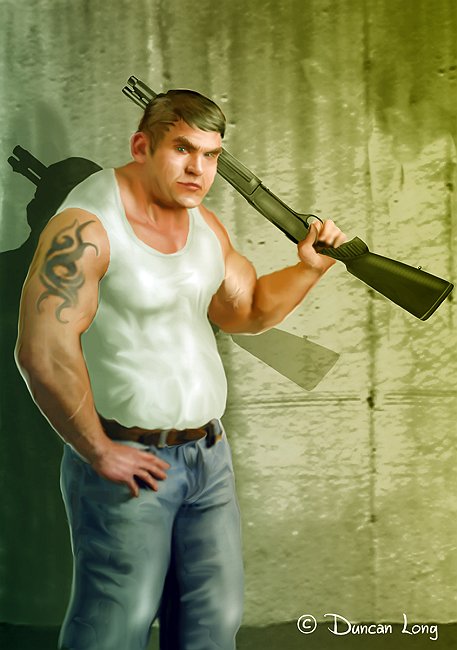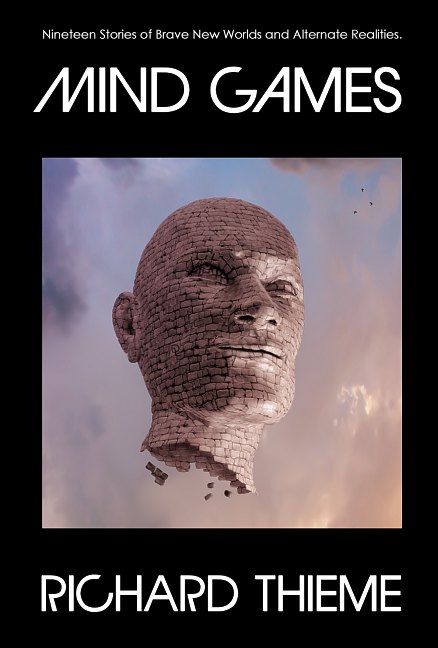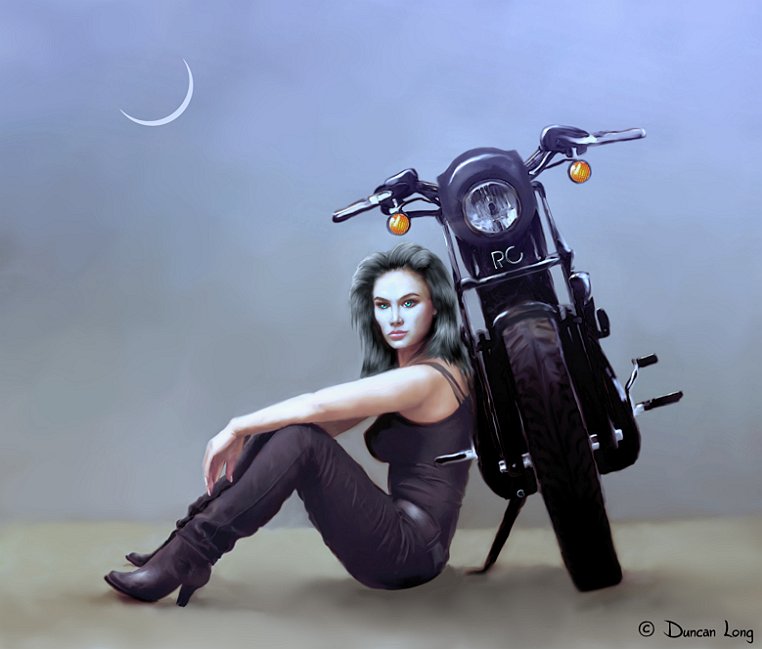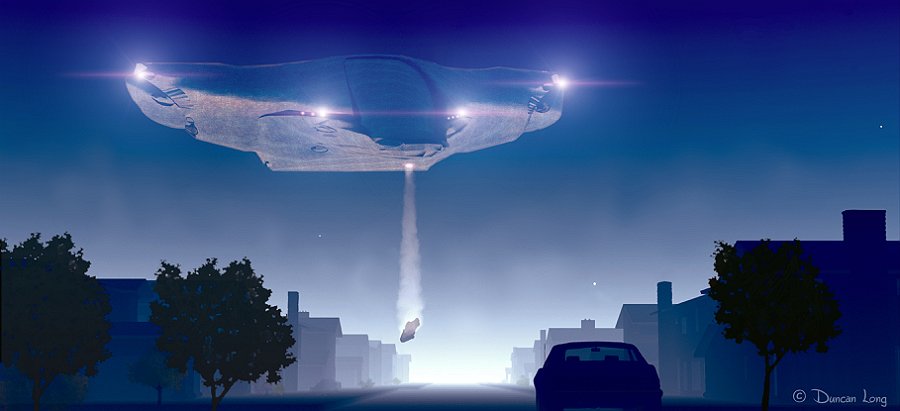Chainmail and Book Cover Artwork
filed in Book Cover Illustrations and Artwork on Feb.03, 2010
Texture can be important in achieving realism in artwork. It can also be a bear to paint if it has a regular, repeating surface. Chainmail is a good example of this. The rings of iron were meticulously made, often with each being riveted into place. And the pattern in which the links of chain were woven has a very distinctive look.
Early medieval knights had armor that was mostly chainmail, augmented with helmet, breast plate, and various other bits and pieces. Yet even armor of the late middle ages often employed chainmail to plug up the chinks between plates as well as give added protection. That means any time an artist paints a knight, regardless of the period, there is going to be some chainmail patterns to paint in.
In the past some artists have simply hinted at the pattern. But often this fails to gain the realism needed, and at worst can look like a high school play where the drama department improvised with heavy knit gray underwear.
This week I realized there might be an easier way to do things. So I decided to tackle the problem with computer assistance. First I located some chainmail photos, studied the linking system a bit (appreciating the work that goes into making the real thing), and then painted a “seamless tile” of chainmail. This picture can then be “poured’ into sections where chainmail is needed, creating an instant sheet of mail.
Of course the catch is that the picture is “flat.” There are ways to map an image to a surface, but in a 2D paint program these are limited.
Unless…
Part of my idea had been to add perspective over the complex shapes mail might cover by next employing a “Goo” plugin (an old version from KPT Power Tools – am I showing my age?). So I popped up the plugin and started shoving mail sections around to get the links of steel into the proper perspective around the curved areas they would occupy were the painting real.
The process worked like a charm. I painted in some shading and there it was. Chainmail. In just a few minutes instead of hours.
So now I don’t dread painting knights.
The first bit I used the pouring chainmail for was in a scene from John Chadwell’s upcoming Werewolves of New Idria (below). The storyline dictated that one arm needed a chainmail sleeve. (By the way, you can read Chadwell’s book online at: www.werewolvesofnewidria.com.)
As I got ready to laboriously paint the pattern, I had the brainstorm of making a tiling painting — and the rest is history. (For many readers, this likely is no great revelation – but for me it was.)
The success of the system inspired me to do a second picture today with more mail (and armor) which — since it doesn’t have a “home” yet — has the working title of “The Good Knight” (shown at the top of this article).
Hopefully I’ll be doing more knights in the future as drawing these guys was a childhood love and it is nice to finally be able to do them justice after all these years.
============
Duncan Long is a freelance magazine and book cover illustrator for HarperCollins, PS Publishing, Pocket Books, Solomon Press, American Media, Fort Ross, Asimov’s Science Fiction Magazine, and many other publishers. See more of Duncan’s book cover illustrations — including a few with chainmail — at: DuncanLong.com
Comments Off on Chainmail and Book Cover Artwork












